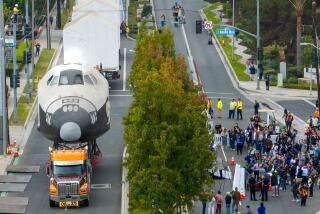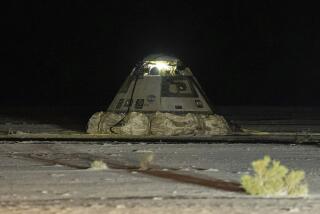Why the Mystery?
Symbolically, the burial of 215,000 pounds of wreckage from the Challenger space shuttle in two abandoned missile silos might close, for some people, the most painful chapter in the history of American space exploration. It would not, however, put an end to questions that linger about the final minutes of the lives of the seven astronauts who perished in the shuttle explosion last Jan. 28, or about just what happened to the shuttleâs crew cabin.
Until this past week the National Aeronautics and Space Administration had proceeded quietly with plans to dismantle some of the larger pieces of the wreckage and entomb the shuttle remains in two 90-foot-deep silos at Cape Canaveral Air Force Base in Florida. By about Feb. 1 massive concrete caps would have been placed over the silo openings and the job declared done. Why bury it in missile silos? âWe have to put it someplace,â a NASA official said.
The burial has been delayed on order of NASAâs legal office, pending the resolution of legal claims brought or considered by survivors of the crew members. Now the burial is scheduled to take place as soon as any claims are settled, however long that may take.
But NASA has rejected recent requests from the New York Times and United Press International to inspect the shuttle crew compartment, which reportedly survived the accident relatively intact, and to obtain NASA photos of the cabin. Also refused was an effort to obtain the tape recording of the crewâs conversations in the minutes preceding the explosion. NASA has cited concern for the privacy of families of the dead astronauts as its reason for not releasing more than an edited transcript.
In turning down the request, filed under the federal Freedom of Information Act, for photos of the shuttle cabin, NASA officials said that they are part of âpersonnel and medical filesâ that are exempt from the disclosure law. The publication of such photos would result in unwarranted intrusion on the privacy of the survivorsâ families, NASA said.
Everyone is concerned about the feelings of the families. But there are larger questions of public interest involved that need to be answered--questions that NASA consistently has refused to answer, although this is the sort of information that routinely is made public after every major commercial-airline disaster.
Just what was occurring on board at the time of the explosion? How much damage did the crew cabin sustain? Was the major damage the result of the explosion or of the impact with the water? Might crew members have survived the explosion and retained consciousness during the fall to the ocean? What exactly was the cause of death? Could an escape system be contrived that would permit astronauts to survive future accidents?
The nation was inundated with technical details of the accident in the past year, but the human element of the tragedy remains a mystery because NASA officials, as self-appointed censors, have chosen to keep such information shrouded in secrecy. Perhaps there is nothing to learn. But the shuttle wreckage should not be entombed, possibly forever, before the public has a chance to decide that for itself.
More to Read
Sign up for Essential California
The most important California stories and recommendations in your inbox every morning.
You may occasionally receive promotional content from the Los Angeles Times.










